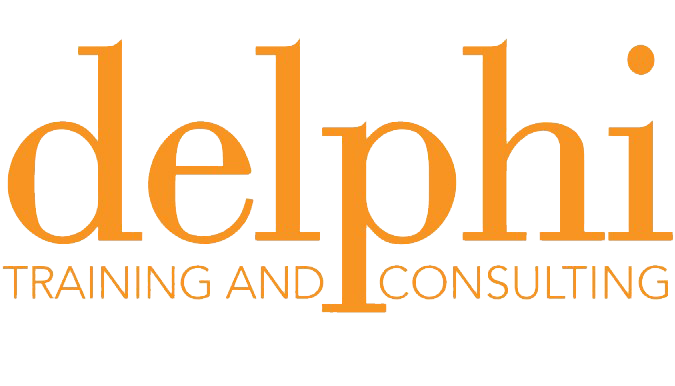A disclosure by an adult about sexual abuse as a child, sexual assault, harassment, or domestic abuse should always be met with compassion and empathy: listen to what they tell you, don’t rush the conversation or push for more information than the person is ready to disclose, and check what supports they have or may need. These are basic humane responses when someone is distressed, even if the distress isn’t overtly apparent. In addition to these responses, different professionals will have considerations related to their specific role. Disclosures of sexual abuse by children will be discussed under ‘When it is important not to be neutral’.
A journalist might seek corroboration of the person’s story such as text messages, email, voice-mail, photos or witnesses to their allegations. Can the person provide dates, times, and places where the alleged event(s) occurred? It will be important to examine details to make sure that the story holds up when it is inevitably before the court of public opinion (and, possibly, a defamation suit). It is not a police investigation (although it may lead to one) but a journalist and their publisher need the story to hold up to scrutiny.
A human resources manager must firstly prioritise the employee’s wellbeing and safety, including providing information about their Employee Assistance Program. A formal process to investigate the allegations might follow, whether handled inside or outside the organisation. Such situations can give rise to a tension or a conflict of interest between protecting the employee and protecting the reputation of the organisation or alleged perpetrator.
A lawyer, whether the matter is criminal, family, civil or a mediation, will advise on law related to the allegations and legal process. Assessing the evidence and any additional information will assist in advising the best way to proceed. Such an assessment will include looking for any discrepancies or inaccuracies that the defense might attempt to capitalise upon to discredit the allegations and the client.
In counselling and psychotherapy, there are other considerations. Sexual assault and domestic abuse services operate from the premise clients are telling the truth. This is appropriate for services responding to predominantly women and children in crisis. In 2019, the Centre Against Sexual Violence Inc., Queensland developed a campaign for Sexual Violence Awareness Month titled #WeBelieveYou. The statement behind the campaign theme said:
“We believe you” addresses a pervasive cultural attitude in not believing survivors when they disclose their experience of sexual violence. Many survivors have attempted to find justice through reporting and have not been believed. Many women choose not to report or disclose to friends and family due to unhelpful messages from their communities, friends and family, the police and the justice system.”
The 2017, Community Attitudes Towards Violence Against Women survey found that four in ten Australians mistrust women’s reports of sexual assault (Minter, K., Carlisle, E., & Coumarelos, C. 2021). The Royal Commission into Institutional Responses to Child Sexual Abuse report reported that 57% of witnesses said they did not disclose the abuse until they were an adult (Royal Commission, 2017). Reasons for delayed disclosure are complex. Children cite fear of not being believed and feelings of shame and self-blame. There is often fear of upsetting family members and wanting to protect the offender (McElvaney, Greene, & Hogan, 2014). Other reasons include fear of being responsible for family breakdown, loyalty and strong emotional bonds with the perpetrator (Lyon & Ahern, 2011; Smallbone, Marshall, & Wortley, 2008). Most children who disclose are not believed! So it makes sense not to disclose. Disclosure is often a bad decision (Swingle et al., 2016).
False memory counter-attacks on victim-survivors’ allegations of abuse were explored in False Memory: A short history and Trauma And Memory: What We Know, What We Don’t Know And What We Know But Don’t Know We Know .The Royal Commission and related research highlight the prejudices, discrimination or disbelief many victim-survivors experience. Louise Milligan’s book, Witness: An investigation into the brutal cost of seeking justice (2020), highlights the retraumatisation of victim-survivors through the legal system and alarmingly low rates of convictions in rape and historical child sexual abuse cases. However, #WeBelieveYou or #BelieveHer statements, while well-intentioned, risk reducing complex issues into a false dichotomy of belief and disbelief.
Journalist Helen Lewis, writes, “Believe women” was intended to capture an undeniable truth: Sexual harassment and sexual assault are so endemic in society that they make the coronavirus look like a rare tropical disease” (Lewis, The Atlantic, 14 May 2020). She quotes fellow journalist, Megan Garber, “Believe women” has evolved into “Believe all women,” or “Automatically believe women.” This absolutism is wrong, unhelpful, and impossible to defend. The slogan should have been “Don’t dismiss women,” “Give women a fair hearing,” (Lewis, The Atlantic, 14 May 2020).
Multiple issues are involved. The first is the safety of all victim-survivors. The second is access to services. The third is trauma informed justice. Movements bring about change and tend to create a backlash as seen with the False Memory Syndrome Foundation. Explored here is the potential impact on therapy, the therapeutic process, and the therapeutic relationship, particularly when working with adults who disclose historical childhood sexual abuse.
Some people report continuous recall or partial recall of abuse. However, others may have no recollections of child abuse, or only sporadic access to those memories. They may seek professional help for other life reasons, or in the aftermath of a traumatic event, only to begin remembering child abuse in the context of therapy. Neither continuous nor discontinuous recall of child abuse is unusual. Nor is discontinuous memory suggestive of a lack of accuracy.
Trauma And Memory: What We Know, What We Don’t Know And What We Know But Don’t Know We Know explored how traumatic memory, which by its nature involves memory encoded in a highly emotional and physiologically aroused state, can be both more accurate than normal memory and at other times more impaired than normal memory (Brewin, 2011). For victims of traumatic experiences, both children and adults, events can be vividly imprinted, encoded and retrieved in the form of flashbacks, a symptom of post-traumatic stress disorder (van der Kolk, 2014) and can also be forgotten, through the mechanisms of repression or dissociation (Ross & Halpern, 2009). Studies have also shown that, in situations of extreme stress or anxiety, a person’s eyewitness memory may be negatively impacted for some types of information about the event (Deffenbacher, Bornstein, Penrod, & McGorty, 2004). Memory for peripheral details may be affected while memory for central details can be accurate (Waring, Payne, Schacter, & Kensinger, 2010).
People can have diverse beliefs about the veracity of their memories of child abuse, regardless of whether the memories have always been intact or have surfaced years after the events. Some clients are convinced of the truth and accuracy of their memories. Others are racked with doubt, erring on the side of disbelief. This response makes sense. Who would want to face the horror of abuse at the hands of a family member or trusted caregiver? Instead, people often search for some other cause or reason for the images, physical sensations, or intense emotional reactions they experience (flashbacks), including a preference for believing they are ‘crazy’ or the memories were ‘just a dream’. Oscillation between asserting and recanting these recollections of abuse is not uncommon.
At some point during therapy, a client may seek from the therapist, directly or indirectly, validation of their memories. This is the “Do you believe me?” question. Other questions may relate to the therapist’s history, such as whether they have been sexually abused. These questions and curiosity about the therapist are understandable. They often come up at a time of great confusion, uncertainty, and vulnerability. The client may be seeking something or someone to hold onto – “Do you really understand me? “Can you help me?”.
Some therapists choose to be open about personal experiences and positions, such as religion, sexual abuse, domestic abuse, addiction, sexual orientation, or gender identity. Sometimes this information is on the therapist’s website to assist potential clients in deciding whether they may be a good fit. Consultation with people who have lived experience of a particular issue is crucial in developing policy and designing services. Lived experience can enhance and deepen a therapist’s understanding of clients with similar experiences. Self-disclosure is not necessary for this to be the case. Other therapists choose to keep a clear boundary around personal information and disclosures. Both approaches are valid and may influence the transference and countertransference dynamic in different ways.
It is often useful to pre-empt the “Do you believe me?” question by informing clients at the outset of therapy about the principle of therapeutic neutrality. Doing so can assist in averting misunderstandings and the potential for the client to externalise inner conflicts and ambivalence about memories through polarising with the therapist.











